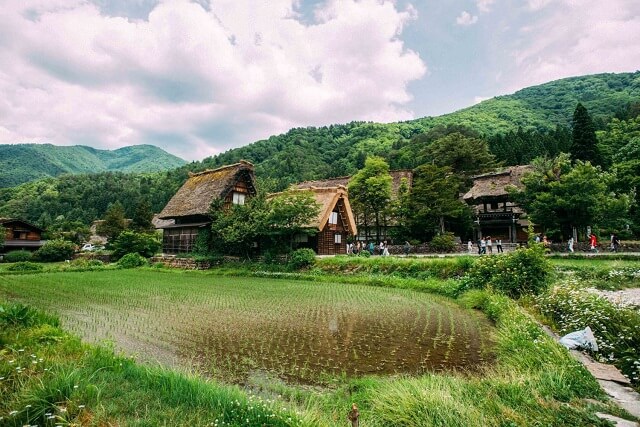
There is a special feeling when arriving in Shirakawa-go. Sure, the magnificent landscape, with picturesque rice paddies surrounded by foggy mountains, is indeed impressive. However, what really makes Shirakawa-go and neighbouring Gokayama so unique, and deserving of their UNESCO world heritage site classifications, are the houses.
-
In Japan, where soulless modular dwellings with an average lifespan as short as 30 years are the norm, the “Gassho-zukuri” houses that dots the landscape here, look like they come from a different era. And indeed they do. Some of the buildings in Shirakawa-go are more than 250 years old.
![]()
![]()
![]()
“Gassho” in “Gassho-zukuri” comes from the Japanese word for prayer. With enough imagination, the angular rooftops could be seen as akin to two hands, palm against palm, in prayer. This kind of construction makes them well suited to the climate in this part of the valley, with hot and humid summers as well as winters with heavy snowfall. These houses are built entirely without using metal nails or other artificial materials.
![]()
Even though the number of “Gassho-zukuri” is considerably lower today than a few decades ago, there is still more of them here than anywhere else in Japan. Around one hundred houses with traditional roofs remain in these villages today.
![]()
One downside with this kind of structures however, is that they do require quite a lot of maintenance. In order to keep the inside of the house comfortable, a fire has must be burning at all times. In addition, about every 20 years or so, the grass roof has to be entirely replaced. This is also done by hand, and requires a lot of labor. In the past, the villagers usually helped each other out with this. However, since the number of families living in this kind of traditional houses has dwindled, the remaining ones have to ask dozens of volunteers for help these days.
![]()
![]()
![]()
A few of the “Gassho-zukuri” houses has been turned into museums, where you can admire the inside of these buildings as well as get a sample of what life in one might have been like back in the days, before people started moving en masse to the convenience of modern houses. Several houses in Shirakawa-go have also been turned into family run minshuku style hostels. Staying overnight might be a good idea, as this gives you a chance to experience Shirakawa-go outside the peak hours, when busses shuffle countless of tourists to the village. During the daytime, there are so many visitors that we feel that it does somewhat hurt the overall experience. The morning hours, when the first sunshine reaches the valley are supposed to be spectacular too.
![]()
There is also a small shrine in Shirakawa-go. One of its buildings has been turned into a museum, sharing the stories about some of the local customs. One of these is the Doburoku Matsuri that takes place between October 14-19. An important part of this festival is the locally brewed sake, which is much thicker than usual sake and carries a higher alcoholic percentage too. Despite private alcoholic beverage production being banned by law in Japan, this shrine has a special permission that allows them to produce a certain quantity every year. Visitors to the museum are given a free sample of the drink.
![]()
![]()
![]()
Due to it’s secluded rural location, the only way to get to Shirakawa-go is by car or bus. Buses depart regularly from both Takayama and Kanazawa, with a return ticket costing about 3000-4000 yen and the trip from either city taking about 1 hour.
Takayama and Shirakawa-go Day Tour from Nagoya
¥7,353
Update date:2024/04/20













 Go here
Go here





